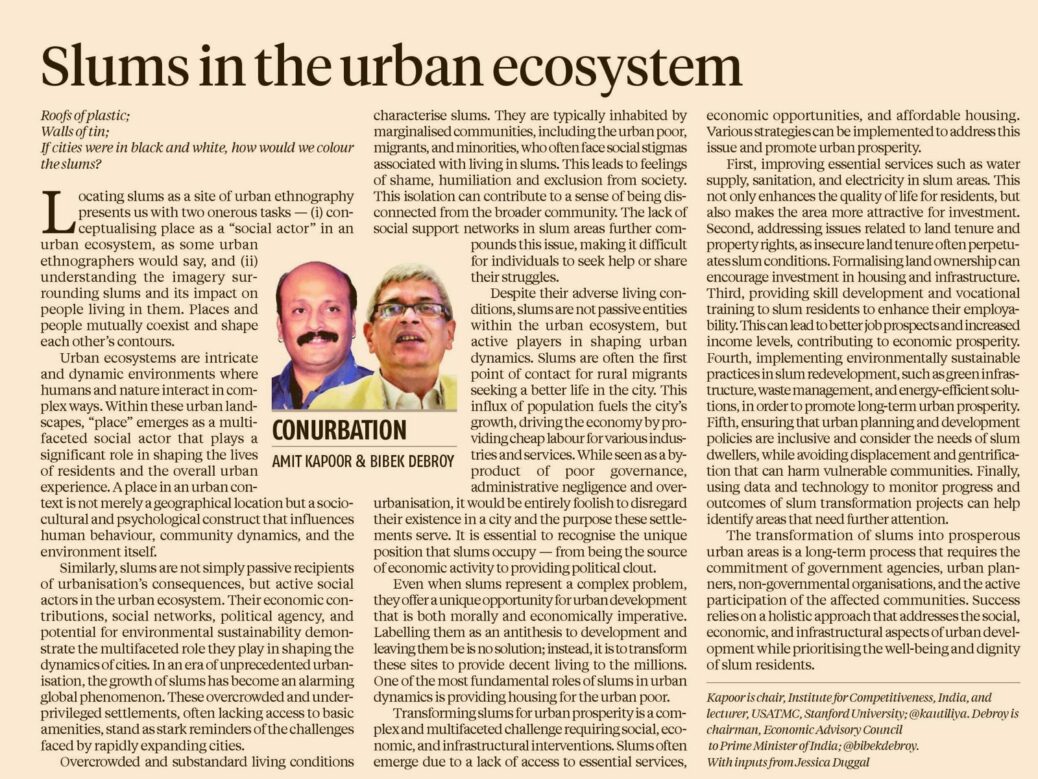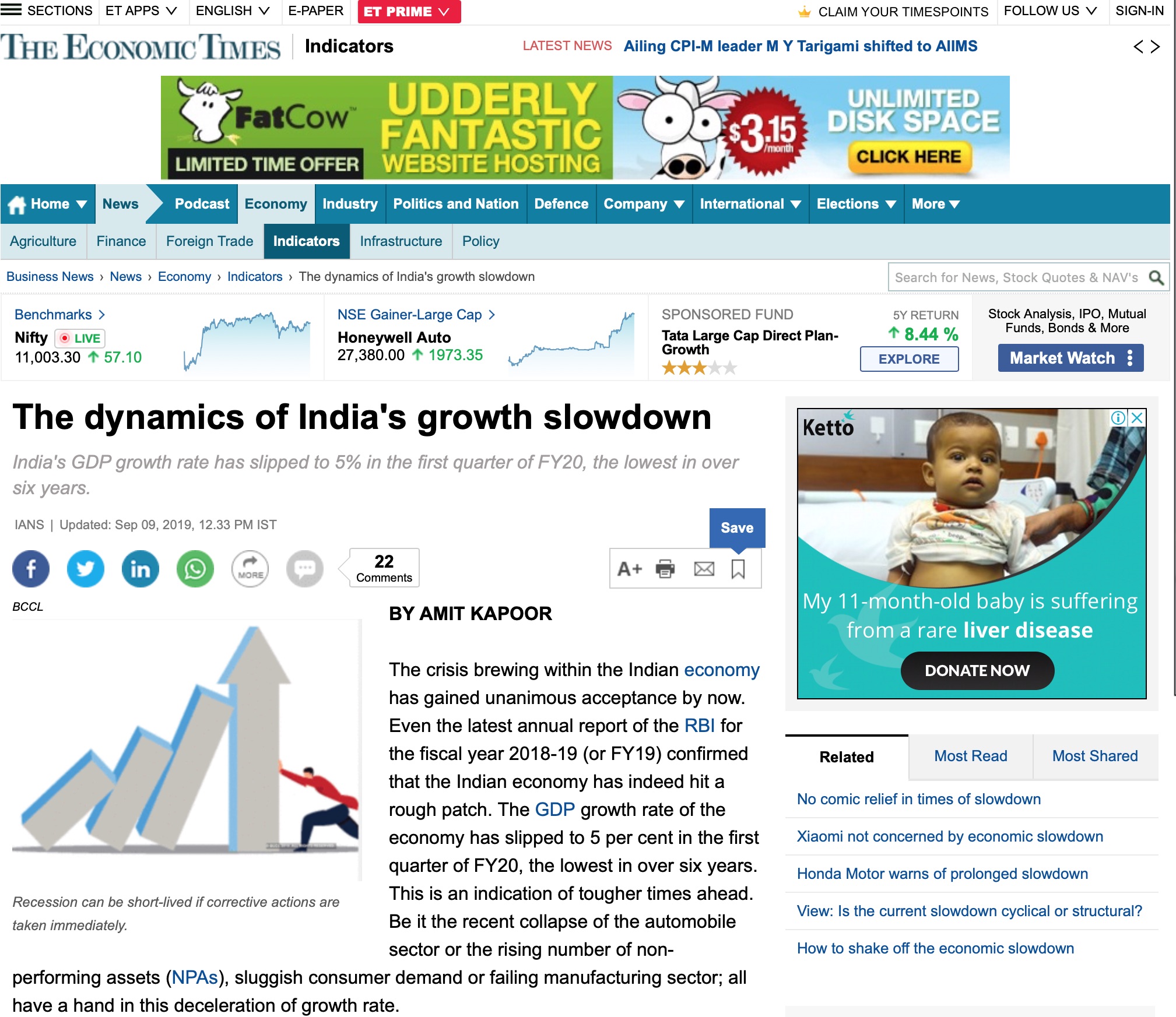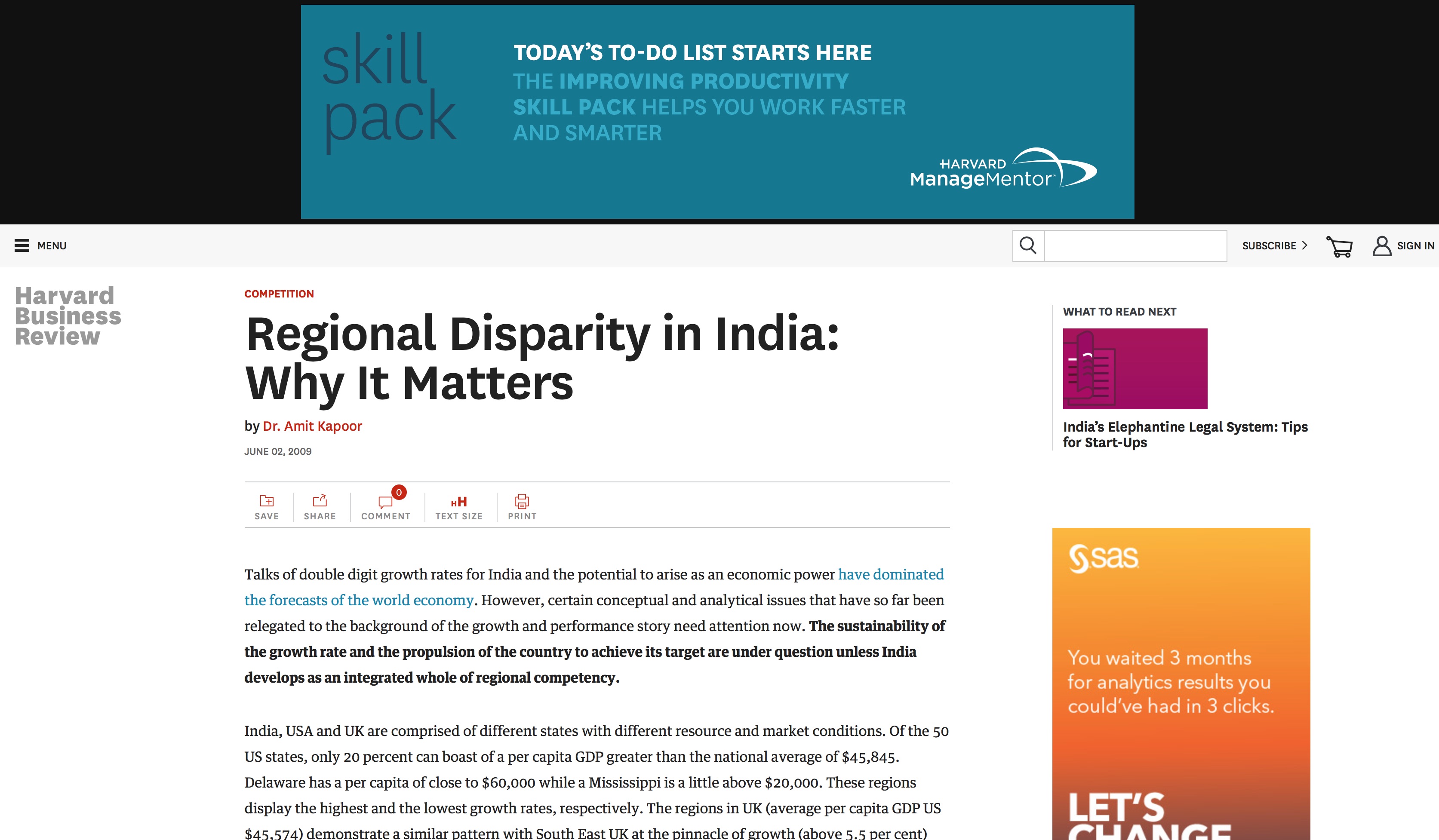Roofs of plastic;
Walls of tin;
If cities were in black and white, how would we colour the slums?
Locating slums as a site of urban ethnography presents us with two onerous tasks – (i) conceptualising place as a “social actor” in an urban ecosystem, as some urban ethnographers would say, and (ii) understanding the imagery surrounding slums and its impact on people living in them. Places and people are mutually co-existing and shape each other’s contours. Urban ecosystems are intricate and dynamic environments where humans and nature interact in complex ways. Within these urban landscapes, “place” emerges as a multifaceted social actor that plays a significant role in shaping the lives of residents and the overall urban experience. A place in an urban context is not merely a geographical location but a socio-cultural and psychological construct that influences human behaviour, community dynamics, and the environment itself.
Similarly, slums are not simply passive recipients of urbanisation’s consequences but active social actors in the urban ecosystem. Their economic contributions, social networks, political agency, and potential for environmental sustainability demonstrate the multifaceted role they play in shaping the dynamics of cities. In an era of unprecedented urbanisation, the growth of slums has become an alarming global phenomenon. These overcrowded and underprivileged settlements, often lacking access to basic amenities, and stand as stark reminders of the challenges faced by rapidly expanding cities.
Overcrowded and substandard living conditions characterise slums, lack of access to essential services such as clean water and sanitation, and often exist on the fringes of legality. They are typically inhabited by marginalised communities, including the urban poor, migrants, and minorities, who are often met with social stigmas associated with living in slums. This also leads to feelings of shame, humiliation and exclusion from society. This isolation can exacerbate feelings of helplessness and contribute to a sense of being disconnected from the broader community. The lack of social support networks in slum areas further compounds this issue, making it difficult for individuals to seek help or share their struggles. Despite their adverse living conditions, slums are not passive entities within the urban ecosystem but active players in shaping urban dynamics. Slums are often the first point of contact for rural migrants seeking a better life in the city. They act as entry points to the urban fabric, offering affordable housing options. This influx of population fuels the city’s growth, driving the economy by providing cheap labour for various industries and services. While seen as a by-product of poor governance, administrative negligence and over-urbanisation, it would be entirely foolish to disregard their existence in a city and the purpose these settlements serve. It is essential to recognise the unique position that slums occupy – from being the source of economic activity to providing political clout.
Even when slums represent a complex problem, they offer a unique opportunity for urban development that is both morally and economically imperative. Labelling them as an antithesis to development and leaving them be is no solution; instead, it is to transform these sites to provide decent living to the millions. One of the most fundamental roles of slums in urban dynamics is providing housing for the urban poor. In many rapidly urbanising regions, formal housing markets often fail to meet the demand for affordable housing. Slums fill this gap by offering relatively low-cost housing options to those who would otherwise be homeless or live in substandard conditions. While slum housing is often characterised by its informality, it represents a vital lifeline for millions of people seeking shelter in urban areas. In addition, they play a significant role in the urban economy, foster social and cultural networks, and influence the political landscape of a city.
Transforming slums for urban prosperity is a complex and multifaceted challenge requiring social, economic, and infrastructural interventions. Slums often emerge due to a lack of access to essential services, economic opportunities, and affordable housing. Various strategies can be implemented to address this issue and promote urban prosperity. First, improving essential services such as water supply, sanitation, and electricity in slum areas. This not only enhances the quality of life for residents but also makes the area more habitable and attractive for investment. Second, addressing issues related to land tenure and property rights, as insecure land tenure often perpetuates slum conditions. Formalising land ownership can encourage investment in housing and infrastructure. Third, providing skill development and vocational training programs to slum residents to enhance their employability. This can lead to better job prospects and increased income levels, contributing to economic prosperity. Fourth, implementing environmentally sustainable practices in slum redevelopment, such as green infrastructure, waste management, and energy-efficient solutions, to promote long-term urban prosperity. Fifth, ensuring that urban planning and development policies are inclusive and consider the needs of slum dwellers. Avoid displacement and gentrification that can harm vulnerable communities. Finally, using data and technology to monitor progress and outcomes in slum transformation projects. Regular assessments can help identify areas that need further attention.
The transformation of slums into prosperous urban areas is a long-term process that requires the commitment of government agencies, urban planners, NGOs, and the active participation of the affected communities. Success relies on a holistic approach that addresses the social, economic, and infrastructural aspects of urban development while prioritising the well-being and dignity of slum residents.
The article was published with Business Standard on September,ber 21, 2023






















